An Interesting World War 2 Royal Navy Campaign Medal Group attributed to Lieutenant-Commander H. J. Wheels, who was 'mentioned' for his services in the Mediterranean in 1944 (1461)
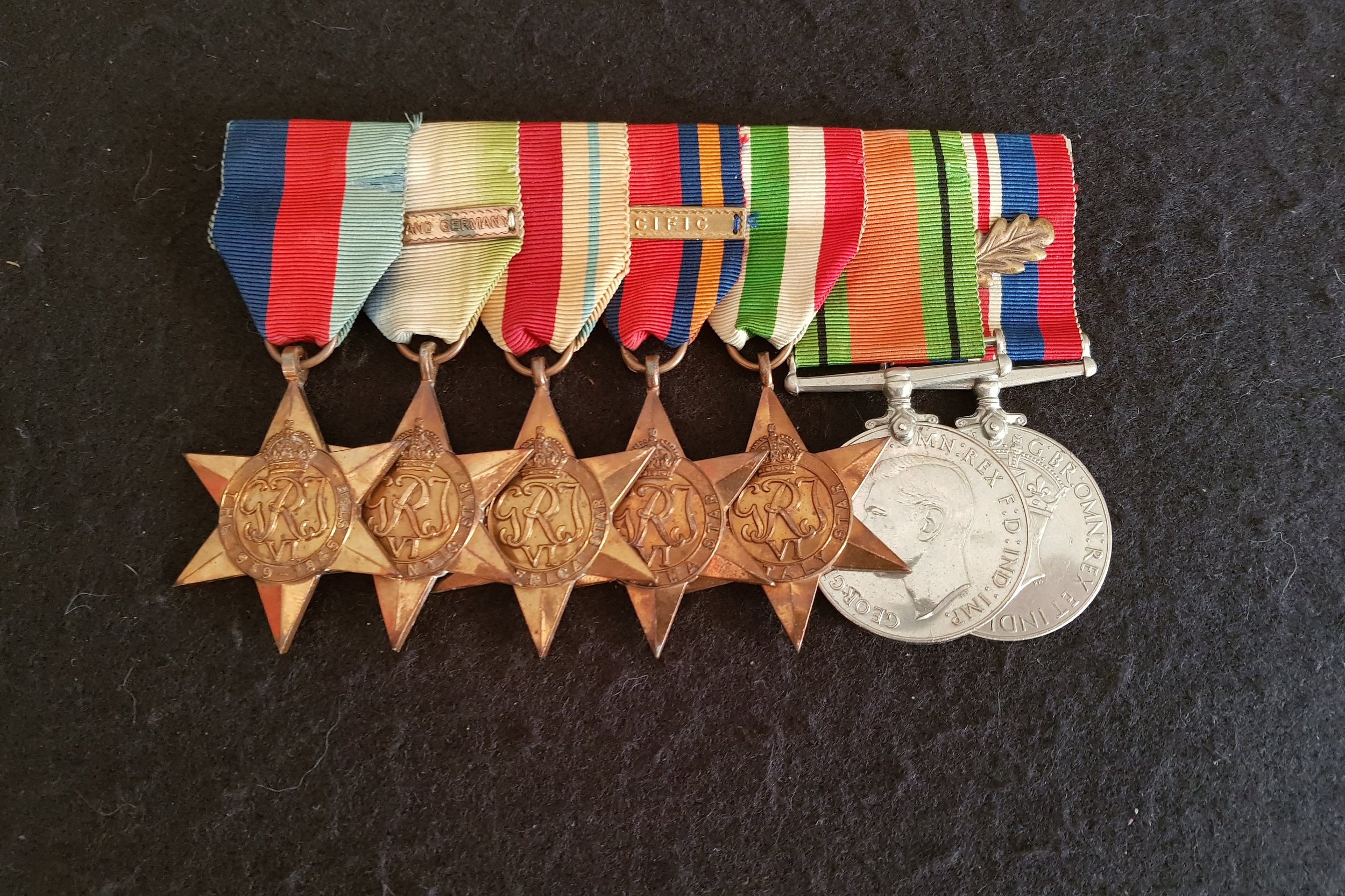
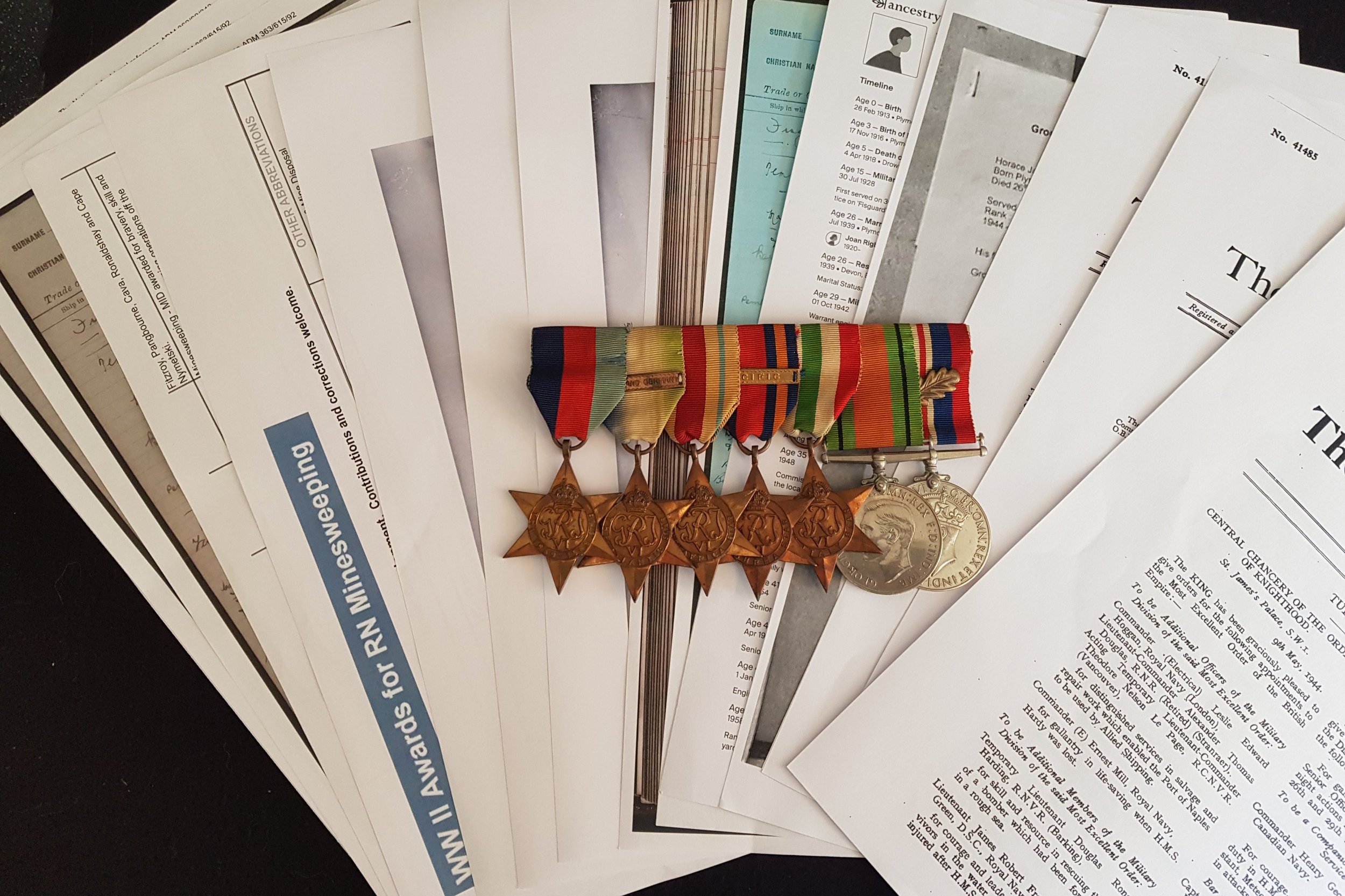


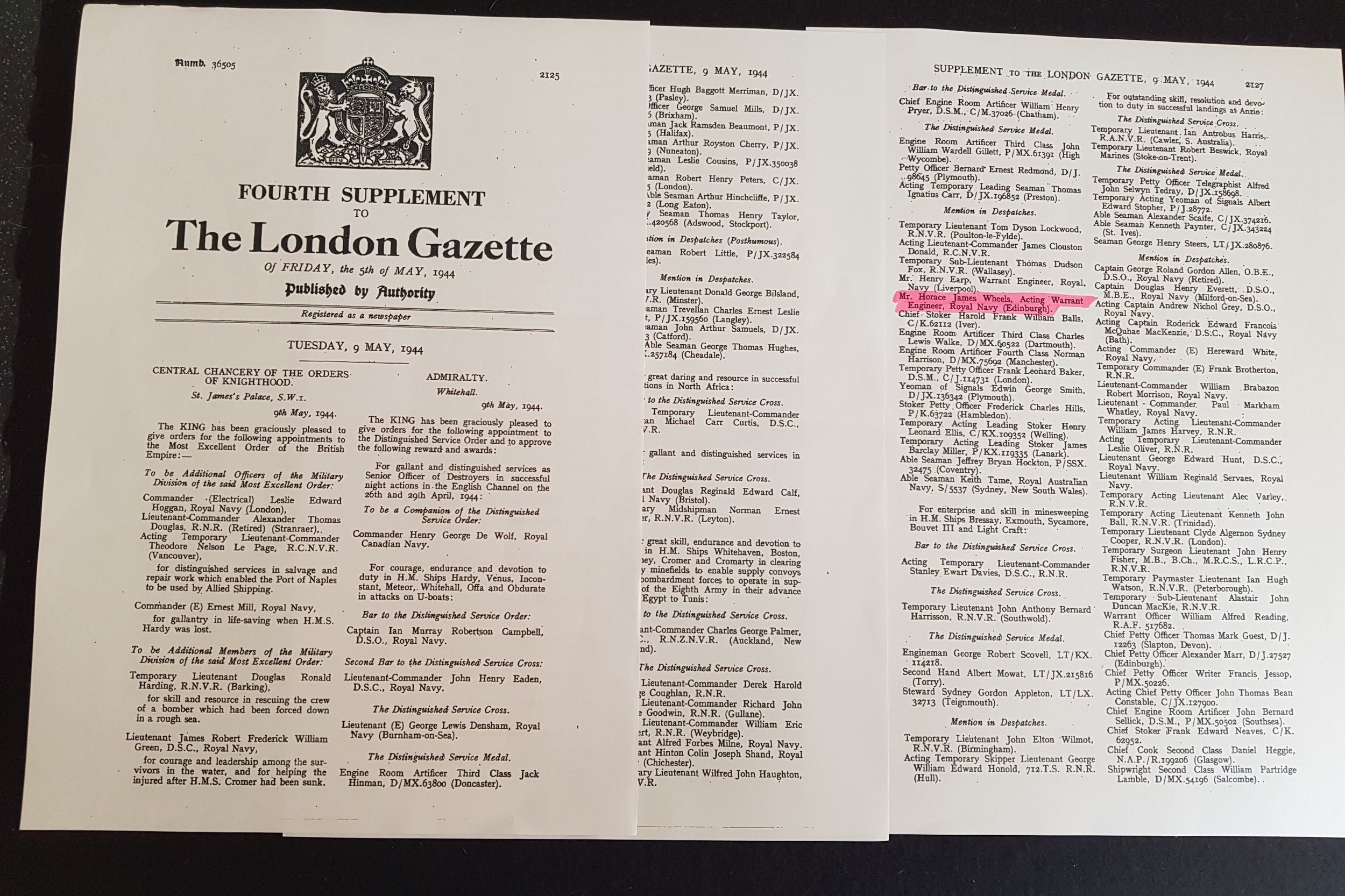



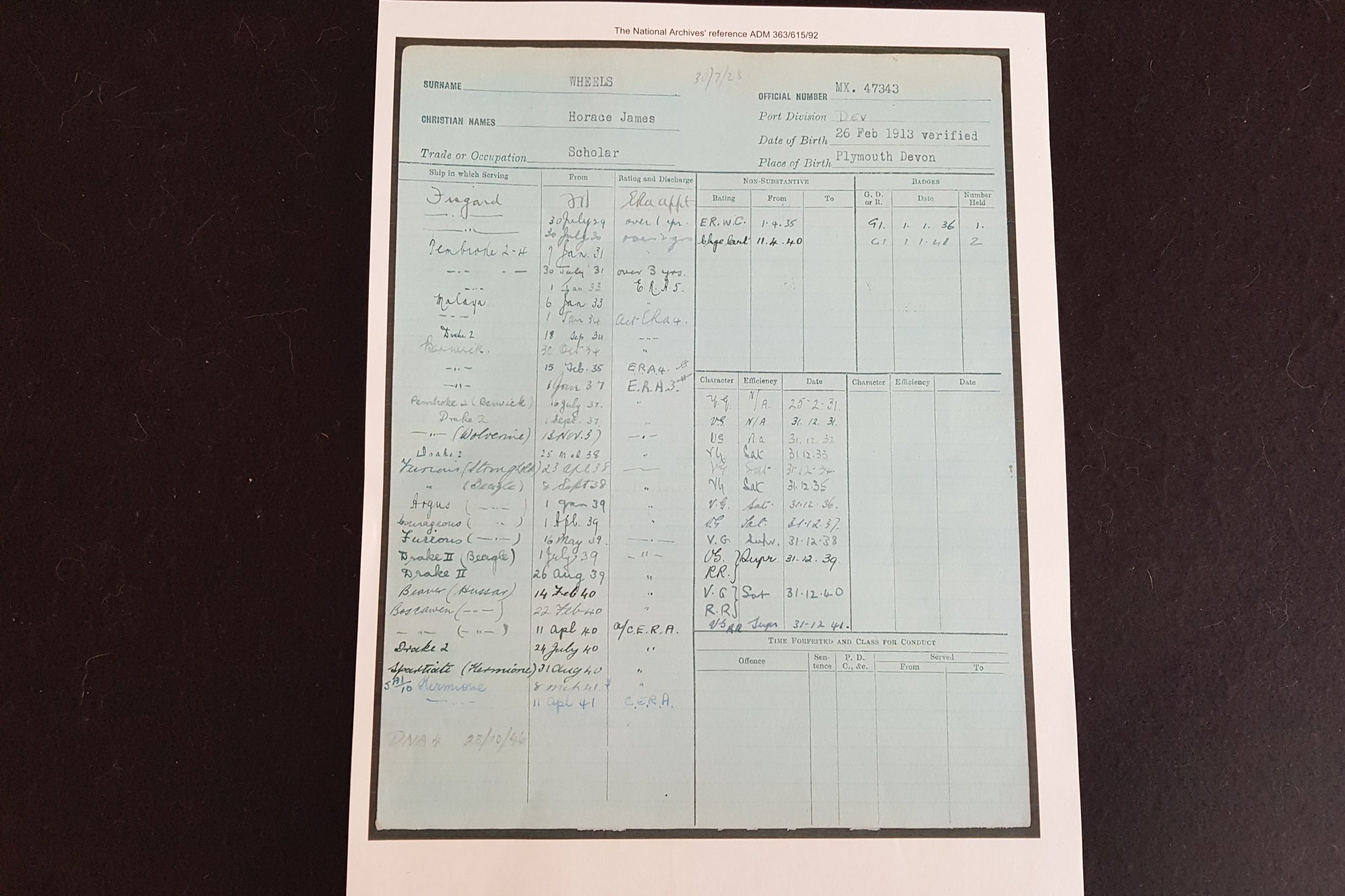

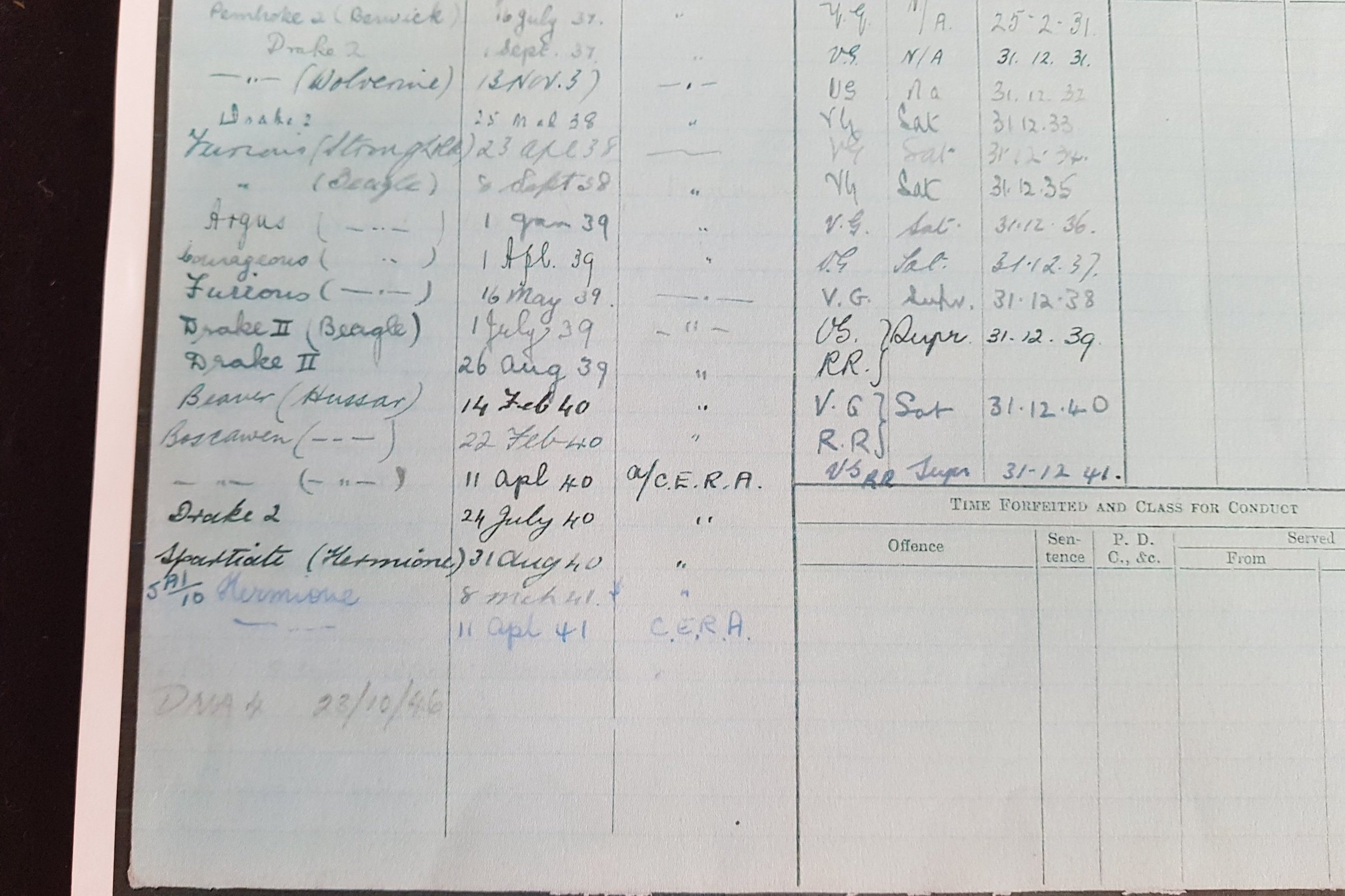
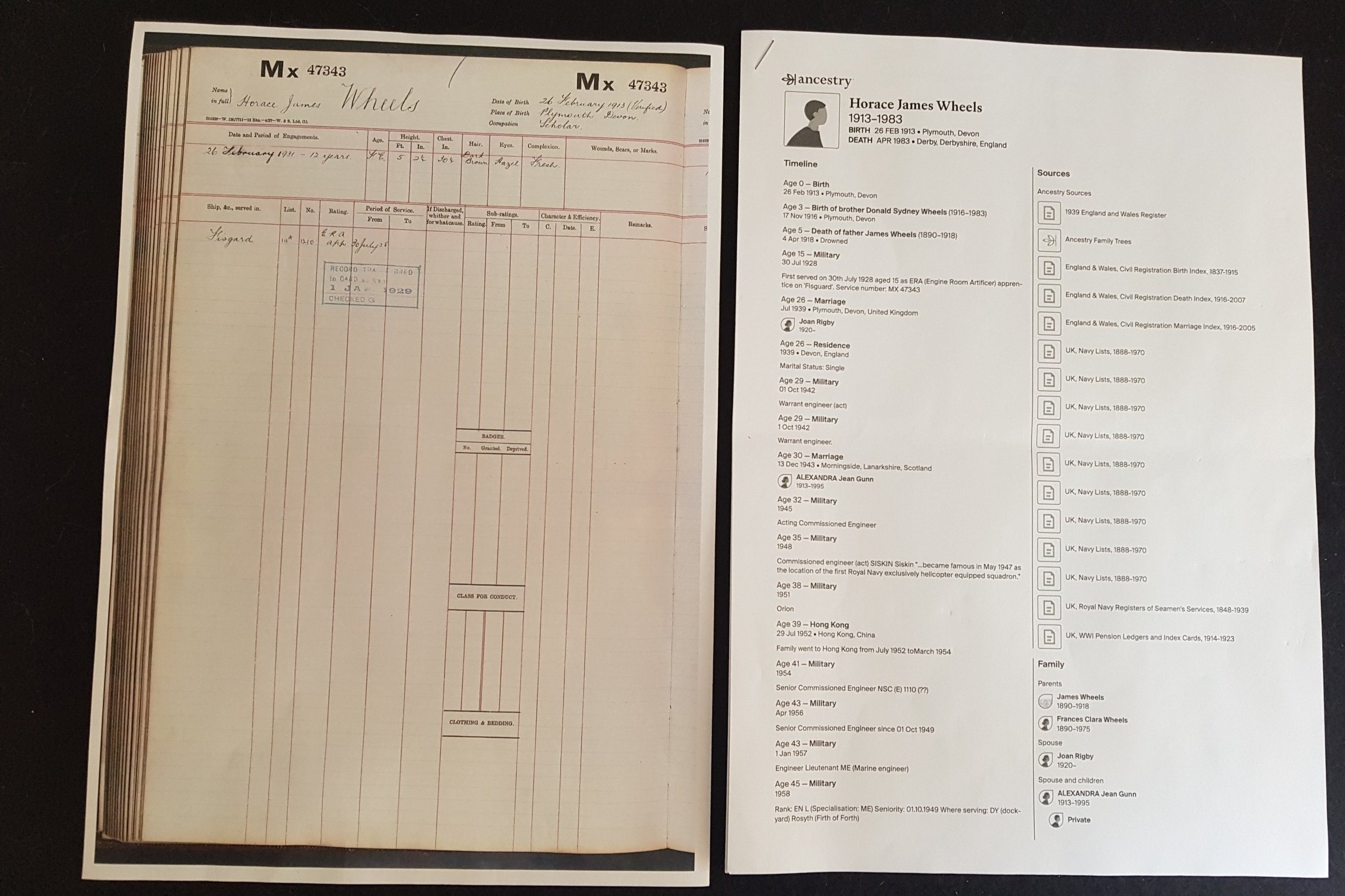
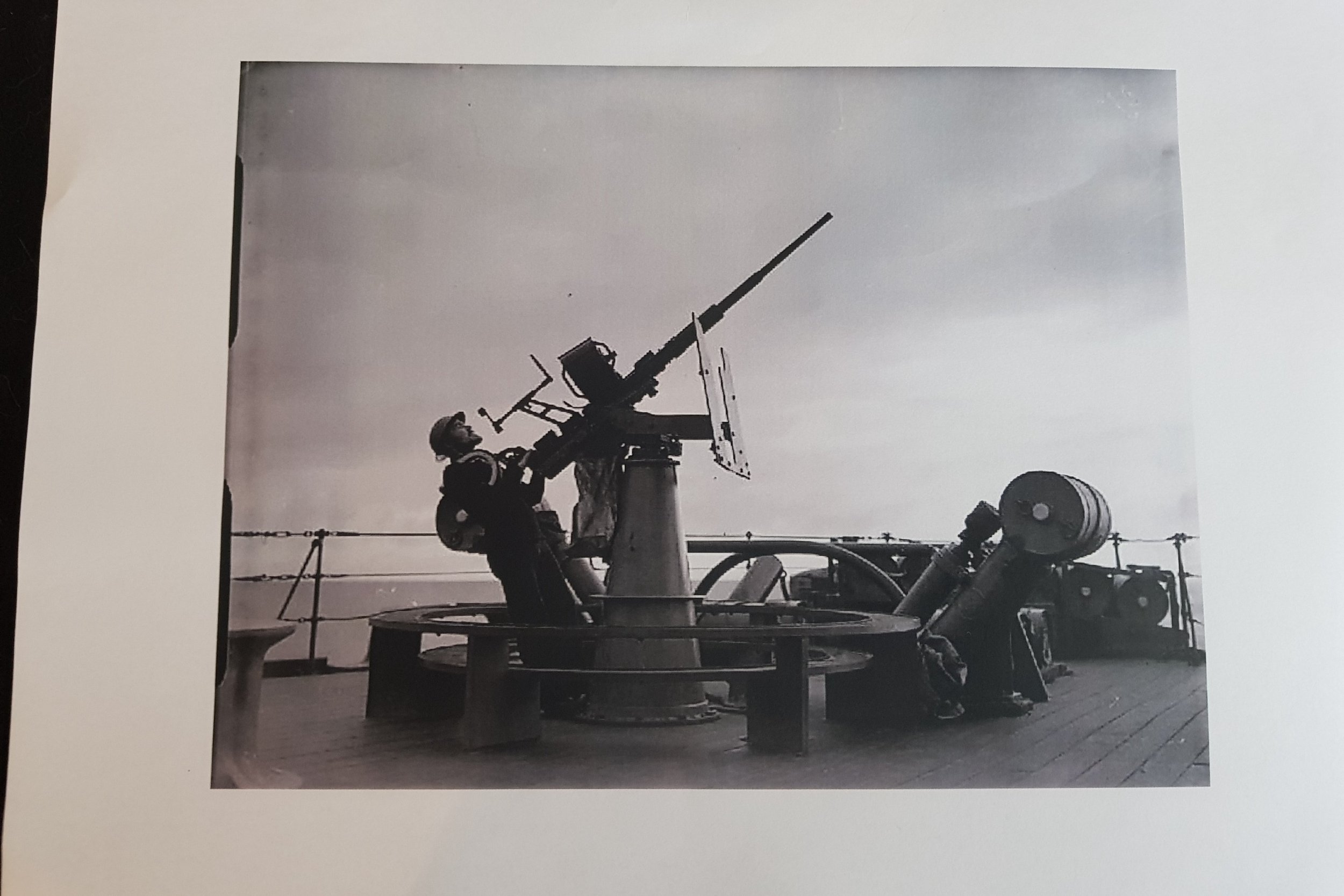
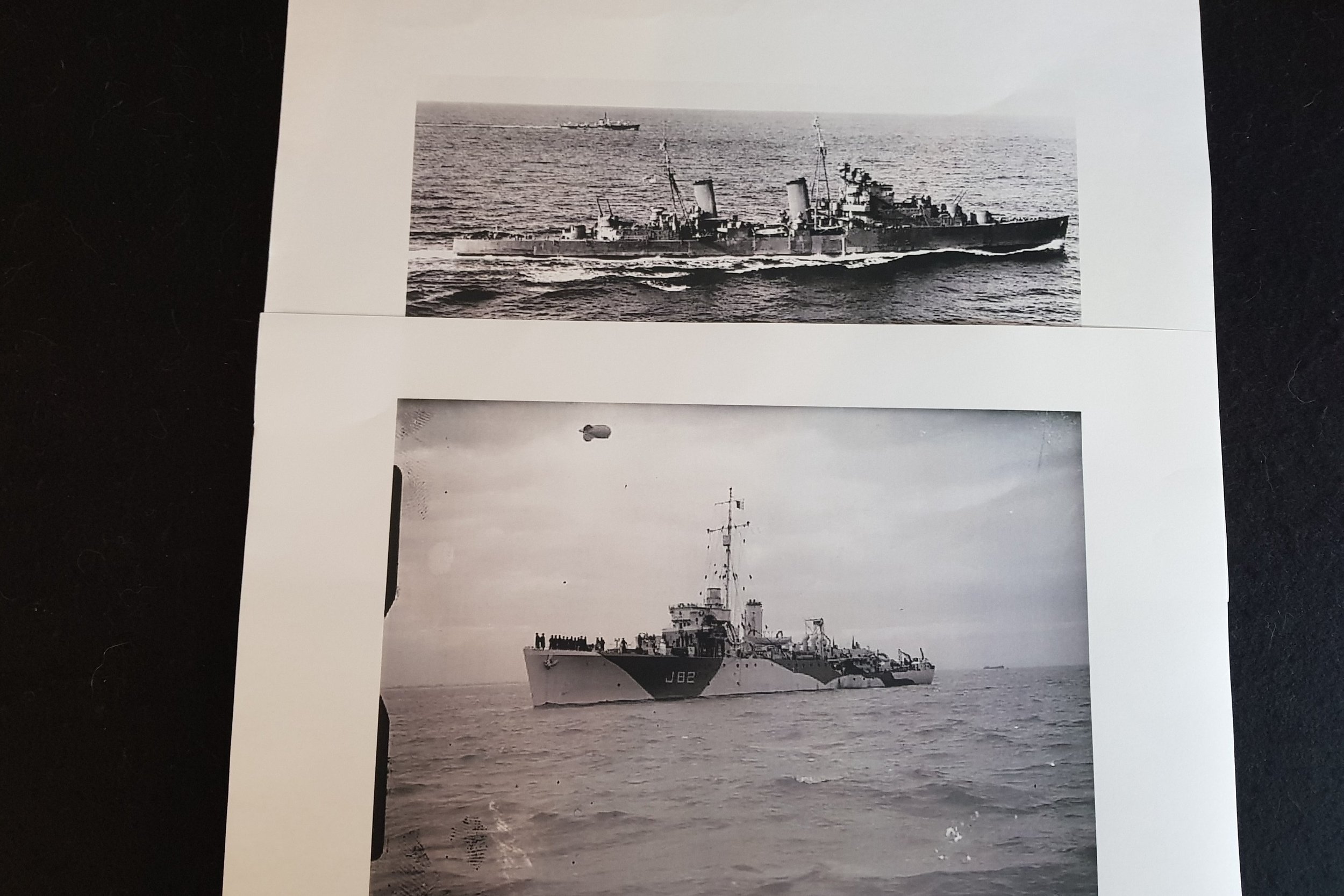
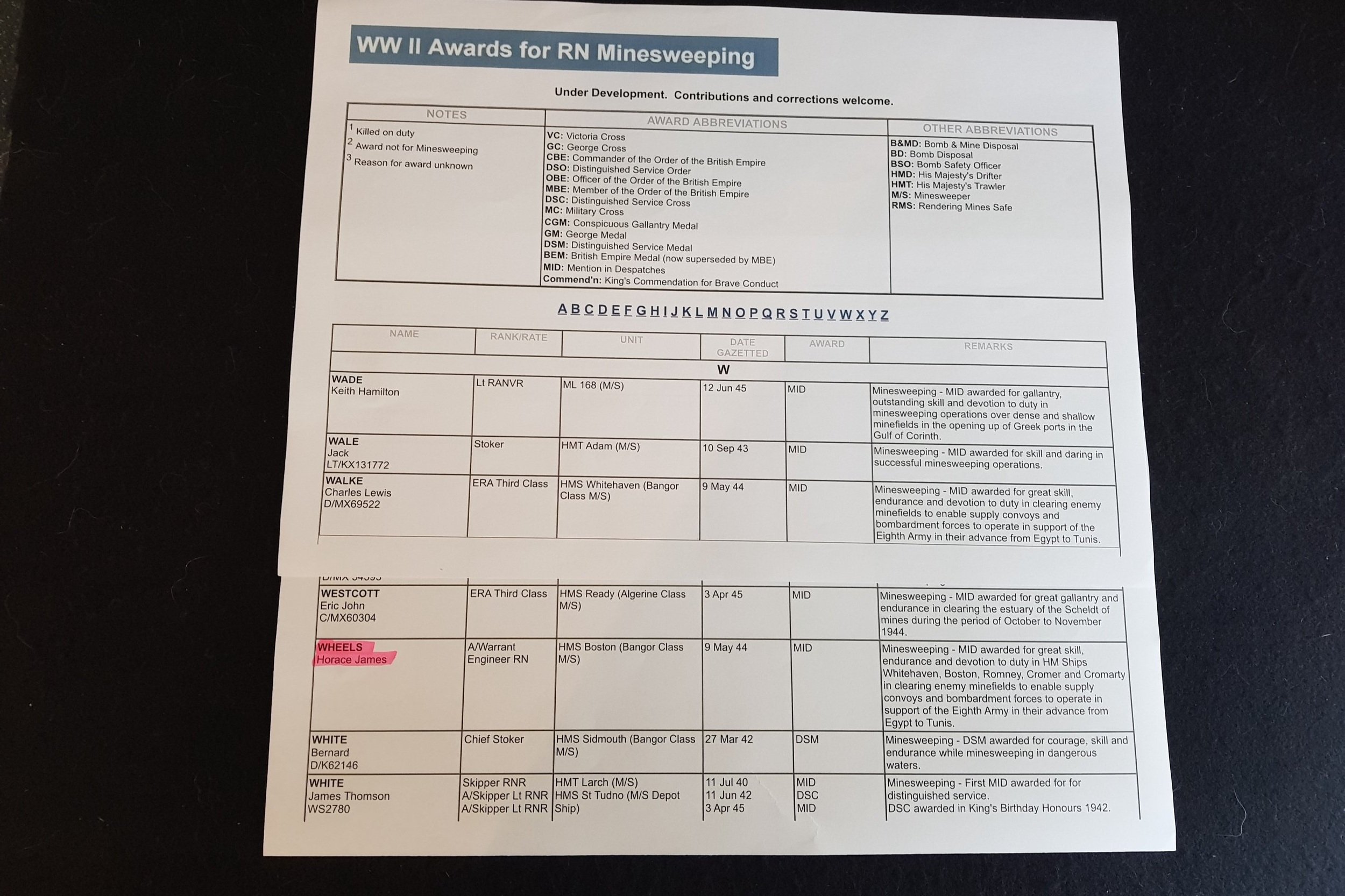
An Interesting World War 2 Royal Navy Campaign Medal Group attributed to Lieutenant-Commander H. J. Wheels, who was 'mentioned' for his services in the Mediterranean in 1944 (1461)
An iteresting Second World War campaign group of seven attributed to Lieutenant-Commander H. J. Wheels, Royal Navy, who was 'mentioned' for his services in the Mediterranean in 1944.
M.I.D. London Gazette 9 May 1944.
Horace James Wheels was born at Plymouth on 26 February 1913, the son of James and Frances Wheels. His father, serving as a Leading Stoker during the Great War, was killed when the destroyer Bittern collided with the SS Kenilworth on 4 April 1918, she sank with all hands.
Despite his father's fate the young Wheels enlisted as an Engine Room Artificer on 30 July 1928 and rose swiftly through the ranks. Stationed as Engine Room Artificer Class III in 1937 with Berwick he entered the Second World War ashore with Drake.
Posted to the minesweeper Hussar on 14 February 1940, he was promoted Chief Engine Room Artificer with her on 11 April. Transferring to Hermione on 31 August 1940 he was with her during the hunt for the Bismark but appears to have left on 11 April 1941, prior to her sinking. Commissioned Lieutenant Engineer on 1 October 1942 Wheels' service history becomes harder to follow. If he continued to serve aboard Hermione, he would have been present when she sank the Italian submarine Tembien, and herself then being sunk by the U-205
On 24 May, Victorious, escorted by Hermione, Aurora and Kenya, was detached to launch an air attack against Bismarck. The attack by Victorious's Swordfish torpedo bombers resulted in a single torpedo hit on Bismarck which did little damage to the German ship. On 25 May, Hermione, short of fuel, was detached from the chase in order to refuel at Iceland. Following the sinking of Bismarck, the British launched a major operation against German supply ships in the Atlantic which supported the operations of surface raiders, with Hermione taking part in searches for these supply ships and German blockade runners before joining Force H, based at Gibraltar on 22 June. Hermione was then deployed to the Mediterranean. On 2 August 1941, whilst helping to protect a convoy, Hermione attacked by ramming the Italian submarine, Tembien, sinking her; an action commemorated in a propaganda painting by artist Marcus Stone.
While under Captain G.N. Oliver, DSO, RN, Hermione was part of the Force A group which escorted supply convoy MW-11, under Rear Admiral Philip Vian, from Alexandria to Malta in Operation Vigorous. On the 14th and 15 June 1942, the Hermione expended most of her ammunition while defending the ships against heavy air attacks and had to return to Alexandria, escorted by HMS Aldenham, HMS Beaufort, and HMS Exmoor
At 23:20 hours on 15 June, U-205 (under Kapitanlieutenant Franz-Georg Reschke) spotted a group of warships north of Sollum and attacked two destroyers with one G7e torpedo each at 23:38 and 23:40 hours, but missed both. Only then did U-205 recognize one of the shadows as a cruiser and fired a spread of three torpedoes at 00:19 hours, hitting Hermione on the starboard side. The ship immediately settled by the stern with a list of 22° before ultimately capsizing, remaining afloat for 21 minutes before sinking. Eight officers and 80 ratings were lost, including the ship's cat. The survivors were picked up by the escorting destroyers and were landed at Alexandria.
It is likely that he continued to see service in the Mediterranean during this time however, earning his 'mention' there for minesweeping with H.M.S. Boston. This vessel was also later involved in the bombardment of German Batteries at Cherbourg in 1944. Wheels continued to serve, with the Navy lists have him serving as a Marine Engineer in the Firth of Forth Dockyards in 1958. Reaching the rank of Lieutenant-Commander before retiring on 26 April 1958, he died on 26 May 1983 in Derby; sold together with copied research.
The medals are mounted as worn, sold with copied research and are as follows,1939-45; Atlantic Star, with France and Germany clasp; Africa Star; Burma Star, with Pacific clasp; Italy Star; Defence and War Medals, with M.I.D. oak leaf.
Condition, good very fine